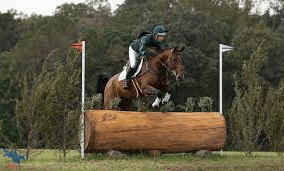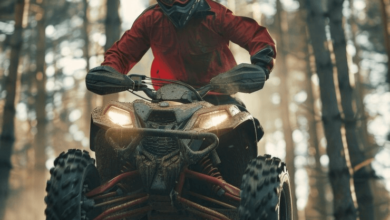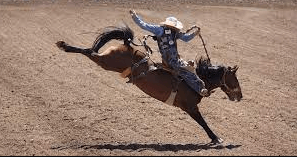How Can I Train My Horse For Eventing?

Eventing is a thrilling and challenging equestrian sport that combines the disciplines of dressage, cross-country, and show jumping.
To train your horse for eventing, it is essential to establish a strong groundwork with your equine partner. This foundation will provide the necessary communication and trust needed for success in all aspects of eventing.
Incorporating dressage training into your routine is another crucial element in preparing your horse for eventing. Dressage focuses on developing precise movements and suppleness in the horse’s body, which are essential skills for performing well in the dressage phase of eventing.
By practicing various exercises such as lateral work, transitions, and collection, you can improve your horse’s balance, flexibility, and responsiveness to aids. Additionally, dressage training helps to develop a deeper connection between rider and horse by enhancing their ability to communicate effectively through subtle cues.
Establishing a Strong Groundwork with Your Horse
Establishing a solid foundation through comprehensive groundwork is crucial in effectively training a horse for eventing.
Improving communication and building trust are key components of this process.
By focusing on these aspects, riders can develop a strong bond with their horses, which is essential for success in the demanding sport of eventing.
Effective communication involves understanding the horse’s body language and responding appropriately to their cues.
This allows for clear and concise instructions, leading to better cooperation between horse and rider.
Building trust involves creating a safe and secure environment for the horse, where they feel confident and comfortable in their interactions with humans.
This can be achieved through consistent handling, positive reinforcement, and establishing boundaries that respect both the horse’s physical and emotional well-being.
A solid groundwork foundation sets the stage for further training, ensuring that the horse is mentally prepared and responsive to more advanced exercises required in eventing competitions.
Incorporating Dressage Training into Your Routine
Incorporating dressage training into your routine involves refining the horse’s movements to achieve elegance and grace in their performance.
This type of training focuses on improving rider position, building strength, and flexibility.
To improve rider position, it is important to develop a deep seat and maintain a straight line from ear to shoulder, hip, and heel. This allows for better communication between horse and rider.
Building strength and flexibility can be achieved through various exercises such as transitions within gaits, lateral work, and collection exercises.
These exercises help the horse become more supple, balanced, and responsive to the rider’s aids.
By incorporating dressage training into your routine, you will not only enhance your horse’s performance in eventing but also strengthen the bond between you and your equine partner.
Developing Specific Skills for Eventing
This discussion will focus on developing specific skills for eventing, particularly in the areas of cross-country jumping techniques, show jumping strategies, and exercises.
Cross-country jumping techniques involve mastering various obstacles such as solid fences, water crossings, and ditches while maintaining control and balance.
Show jumping strategies require precise riding to navigate a course of jumps within a specified time limit.
By incorporating specific exercises tailored to these disciplines, riders can improve their horse’s agility, confidence, and overall performance in eventing competitions.
Cross-Country Jumping Techniques
To successfully navigate cross-country jumps in eventing, riders must employ a combination of precise pacing, accurate line selection, and well-timed adjustments to ensure a safe and efficient ride.
Jumping position plays a crucial role in maintaining balance and control while negotiating the various obstacles on the course. Riders need to adopt a secure two-point position, with their weight slightly forward and heels down, allowing them to absorb the impact upon landing.
Additionally, understanding jumping distances is essential for smoothly clearing each fence. Riders must learn to gauge the takeoff point based on their horse’s stride length and adjust their speed accordingly to achieve the correct distance.
By mastering these techniques, riders can confidently tackle cross-country jumps in eventing competitions.
Show Jumping Strategies and Exercises
Implementing effective show jumping strategies and engaging in purposeful exercises can greatly enhance a rider’s ability to navigate the course with precision and finesse, leaving both the audience and competitors captivated by their skill and poise.
To improve agility and jumping technique, riders can incorporate the following strategies and exercises into their training routine:
- Gridwork: Setting up a series of jumps in a grid formation helps horses learn to maintain rhythm, adjust stride length, and improve their scope over fences.
- Related distances: Practicing jumping combinations that require precise adjustments between fences helps riders develop the skill of seeing distances and executing accurate approaches.
- Course simulation: Designing courses with various types of jumps, turns, and related distances mimics the challenges faced in competition settings. This exercise enhances a horse’s ability to quickly assess different obstacles while maintaining balance and focus.
- Incorporating poles: Using ground poles before or after jumps encourages horses to pick up their feet more efficiently, improving technique and overall athleticism.
- Gymnastics: Creating gymnastic exercises involving bounces or multiple elements helps horses develop strength, coordination, and confidence when navigating complex jump sequences.
By incorporating these strategies into training sessions, riders can focus on improving agility while refining their horse’s jumping technique. These exercises not only help build technical skills but also foster trust between rider and horse through consistent practice. Ultimately, this approach allows for a seamless connection between horse and rider during show jumping events.
Frequently Asked Questions
What are the common mistakes to avoid when establishing a strong groundwork with your horse?
One common mistake to avoid when establishing strong groundwork with your horse is not avoiding distractions. For example, a horse may become easily distracted by nearby noises or other animals, which can hinder the training process. Consistency is also important in order to establish clear expectations for the horse.
How can I introduce lateral movements in my dressage training routine?
To introduce lateral movements in dressage training and improve a horse’s suppleness and flexibility, exercises such as leg-yields, shoulder-in, and haunches-in can be incorporated. These movements enhance the horse’s balance, coordination, and responsiveness to aids.
What are some exercises to improve my horse’s jumping technique for eventing?
To improve your horse’s jumping technique for eventing, incorporate exercises such as grid work and gymnastics. Focus on developing balance, strength, and agility. Additionally, effective cross country riding requires proper position, pace control, and accurate line selection.
How can I build my horse’s stamina and fitness levels for eventing?
Building endurance in a horse for eventing involves incorporating interval training. This method alternates between periods of intense exercise and rest, gradually increasing the duration and intensity to improve stamina and fitness levels.
Are there any specific horse breeds or conformation traits that are better suited for eventing?
To excel in eventing, certain horse breeds and conformation traits are advantageous. Thoroughbreds and Warmbloods possess the athleticism and endurance required, while traits like a strong shoulder, compact build, and balanced proportions contribute to their suitability for the sport.
Conclusion
In conclusion, establishing a strong groundwork with your horse is crucial when training for eventing. By focusing on building a solid foundation and developing trust and communication, you set the stage for success in the various disciplines of eventing.
Incorporating dressage training into your routine is another essential component of preparing your horse for eventing. Through this discipline, you can improve balance, flexibility, and obedience, which are all essential skills needed in eventing.
Furthermore, developing specific skills tailored to eventing is vital for a successful performance. This includes practicing jumping exercises to enhance your horse’s technique and confidence over obstacles. Additionally, cross-country training allows your horse to become accustomed to navigating challenging terrains and obstacles at higher speeds. By honing these specialized abilities alongside a strong groundwork foundation and dressage training, you can prepare yourself and your horse for the demanding nature of eventing.
Just like a skilled conductor leading an orchestra harmoniously through complex compositions, establishing a solid groundwork with your horse sets the rhythm for success in eventing. Incorporating dressage training fine-tunes each movement with precision akin to a master painter meticulously stroking brushstrokes onto canvas. Together with developing specific skills tailored to eventing such as jumping exercises and cross-country training, these elements create a symphony of expertise that will propel both you and your equine partner towards triumph in the exhilarating world of eventing.



